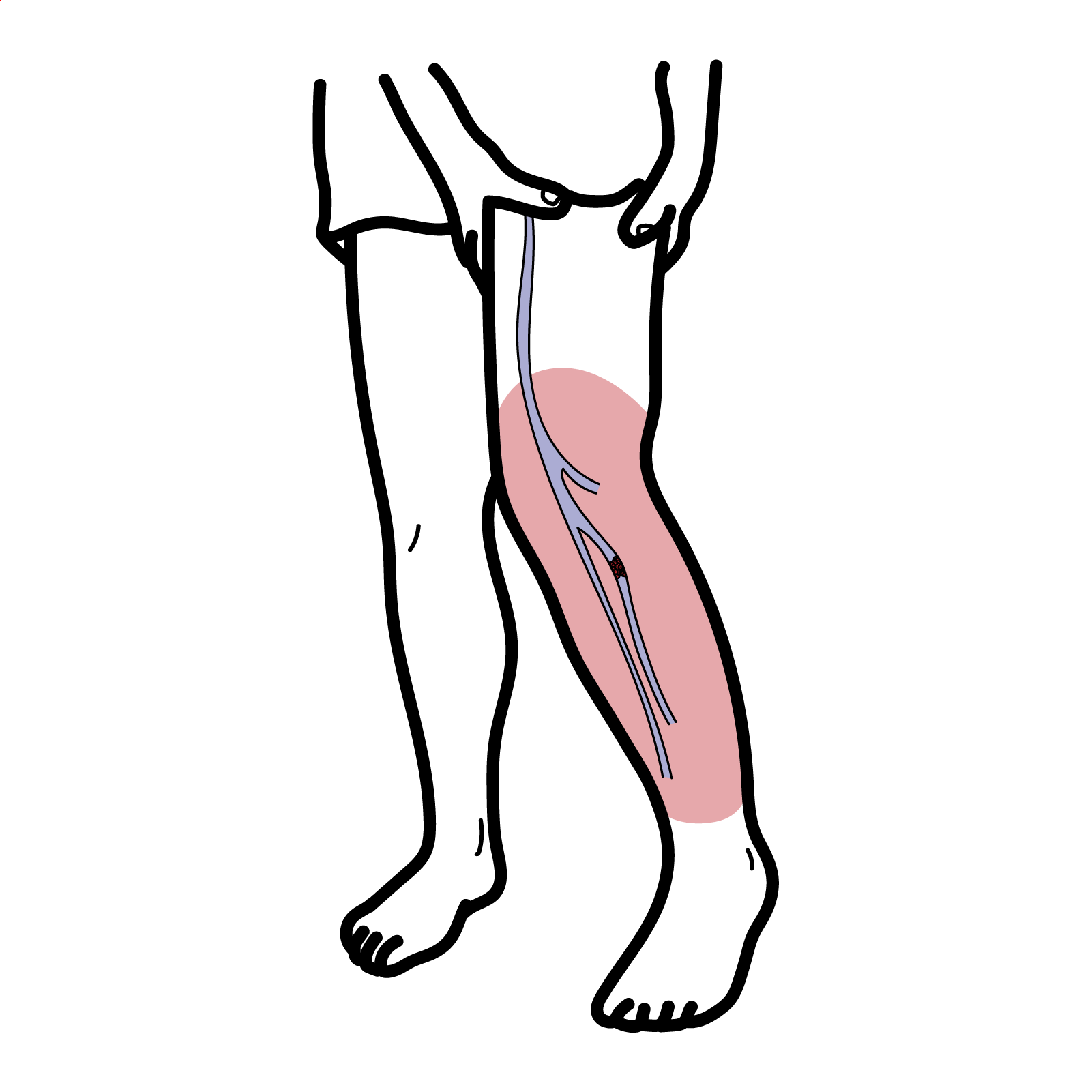Deep Vein Thrombosis


Deep vein thrombosis (DVT) is the formation of a blood clot in a vein deep under the skin 25-50% of surgical patients and many non-surgical patients. 65% of DVT are below the knee are symptomatic and rarely embolism to the lung. There are many causes of DVT.
Thrombus: blood clot
Thrombosis: blood clot that forms in a vessel and remains there
Deep Vein Thrombosis (DVT): Formation of a blood clot in one of the deep veins of the body, usually in the leg
Pulmonary Embolism (PE):occurs most often from a disloged thrombus from teh lower limb (DVT). The embolyus travels towards the lung and becomes lodged in the pulmonary artery resulting in infarction of the lung tissue.
Venous Thromboembolism (VTE): Formation, development, or existence of a blood clot or thrombus within the venous system that has/potential to embolize.
All comes down to Virchow’s Triad. Any change to Virchows triad increases the risk of VTE.
Virchows Triad: Hypercoagulability, Vessel wall injury, Stasis.
Hypercoagulability
| Inherited Thombophilias |
| Factor 5 leiden mutation |
| Pro-thrombin gene mutation |
| Protein S deficiency |
| Protein C deficiency |
Stasis
Endothelial injury
Clinical Presention DVT usually affects the veins in the legs, notably the calf.
Signs of Pulmonary embolism (complication of DVT)
Wells Criteria
| MODIFIED WELL CRITERIA | |
| Clinical features | Score |
| Active cancer | 1 |
| Paralysis, paresis, or recent cast immobilization of the lower extremities | 1 |
| Recently bedridden for ≥ 3 days, or major surgery within the previous 12 weeks requiring general or regional anesthesia | 1 |
| Localized tenderness along the distribution of the deep venous system | 1 |
| Entire leg swelling | 1 |
| Calf swelling at least 3 cm larger than that on the asymptomatic side | 1 |
| Pitting edema confined to the symptomatic leg | 1 |
| Collateral superficial veins (non-varicose) | 1 |
| Previously documented deep vein thrombosis | 1 |
| Alternative diagnosis at least as likely as deep vein thrombosis | 2 |
Wells Scoring System – help tailor investigations
D-dimer assay is only useful if it is negative; it helps in ruling out DVT.
Diagnosis
The aim of treatment is to prevent PE, reduce morbidity and prevent or minimise the risk of developing the postphlebitic syndrome
| MANAGEMENT DURATION | |
| Clinical situation | Duration |
| VTE provoked by transient major risk factor | 3 months |
| Distal unprovoked DVT or PE | 3 months |
| First unprovoked proximal DVT or PE | 6 months |
| First unprovoked VTE plusActive malignancyMultiple thrombophiliasAntiphospholipid syndrome | Indefinite |
| Recurrent unprovoked VTE | Indefinite |
Complications
Prognosis
Prevention
Prevention in surgery
Make sure there are no contraindications for LMWH and Mechanical prophylaxis.

Please confirm you want to block this member.
You will no longer be able to:
Please allow a few minutes for this process to complete.
Discussion